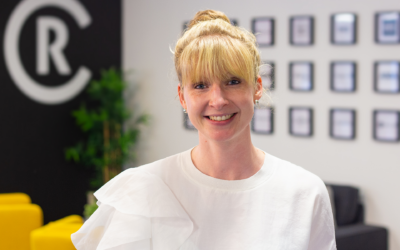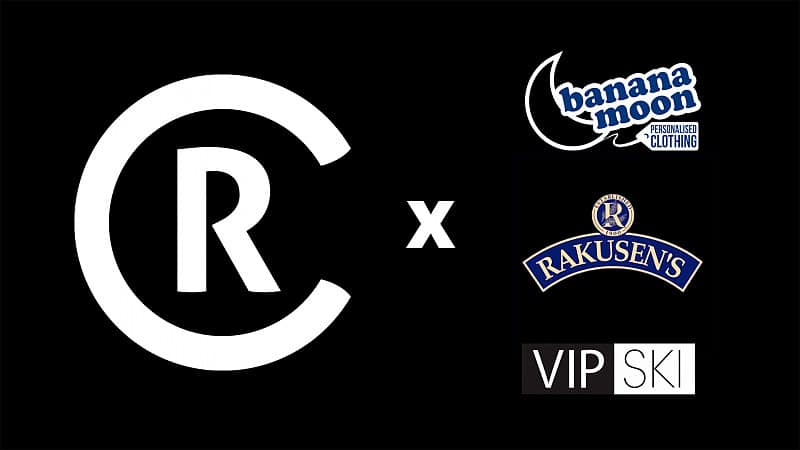Victoria Aspinall, Strategy Director at CreativeRace.
How the agency’s performance marketing works and the art of psychology
Aspinall and Slade discuss with the agency’s sales team what a client “really needs” before delving into customer insights.
Relationships work best with clients, Slade explained, when the agency can offer solutions that are implemented and the agency can then act as an extension of a business. “You want someone who’s going to be part of that journey and move forward with you.”
An example of how the performance team works with a client is with customised clothing retailer Banana Moon, providing SEO, PPC and digital PR services.
When the agency first assessed the Banana Moon website, it was structured in a way that gender was pre-selected when buying an item which made navigating the site difficult for customers seeking to bulk order across genders.
“The quick thing we discovered was that’s not how people shop. A company might have a workforce that spans multiple if not all genders and the starting point is unlikely to be gender bias and more generic such as a Google search for “embroidered hoodies”. We completely restructured the way they think about their customer to appease what that buying persona actually is,” he explained.
Banana Moon was one of a trio of client wins announced by the agency last year.
By drilling into what the target audience is using the site for, then creating a better aligned information architecture as well as informative content about how to use the site, the brand has received an increase in contact from customers.
“It’s moving into the psychology side of things outside of traditional SEO and bringing insights from other disciplines into play.”
Psychology, and behavioural ‘nudges’, is what the agency has started tapping into through its performance marketing offering.
“The use of nudges can have a massive impact if you understand your audience and what makes them tick, getting the right nudge can have a massive impact on conversions, sign-ups and customer loyalty,” said Aspinall.
Weaving in a number of different ‘nudges’, from salience, anchoring, social proof and trust, it can “dial up the effort and impact” and drive sales for a brand.
“This contact with nudges is basically the solution to people’s biases,” Slade pointed out.
From customers who might be easily led by buying into big brand names, driving into that bias and being more aspirational rather than detail orientated is what can lead to a “quicker action to purchase”.
Whereas with other biases that may focus more towards price, as an example, content and storytelling are key to focus on if you are not the cheapest.
“The easiest way to get an initial steer is to do audience research. If you ask anybody in the CRO space they will all agree that it’s a very underrated and under utilised method for gathering insights,” he said.
“For genuine results, when you’re doing audience research you have to reflect on bias. You have to be careful not to build bias in that audience research as it can be very easy to think about what you want the answer to be and almost shape the research to match that answer.”
Strategy and future of the performance marketing at the agency
“That’s why everything that we do starts with strategy, we are so passionate about getting that audience understanding nailed right up front,” said Aspinall.
Although it might be considered a “harder sell” due to the time investment involved assessing who the audience is and what their biases are, it can help a brand to “cut through straight away”.
“If you don’t know who you’re talking to and what motivates and drives them, you’ll never know what to tap into. It’s absolutely critical,” she added.
Figuring out the audience can “stop expensive mistakes” especially with a new brand.
But the work doesn’t end there. As the industry is “constantly evolving” and audiences change over time, being able to understand them, adapt and evolve a strategy and tweak it is crucial for success.
“Using and pointing your audience strategy in the right way is absolutely critical, but as is not being too wedded to it if you feel like it’s not working,” Aspinall added.
The way the duo see the performance set-up evolving at CreativeRace is to be “almost like a collective of consultants that work with the client” by fulfilling client needs as a resource pool instead of being confined to a specific project.
“Our plan, and the way I see agencies in general evolving, is they’re going to become a lot more fluid and a lot more agile and transitional in how they work with the clients, so almost filling a clients void of needs in certain points of time,” he said.
“We can make sure we are at the forefront of that by making sure everything stays focused around our audience first and foremost. It all has to tie back to understanding our audience and their biases, and then working with them. This then cascades across the whole business strategy and performance – not the other way around” said Aspinall.
The transition of moving away from marketing being led by the business, to being part of the core business strategy, will help it to evolve and grow, she said.
“I think that’s such a lovely, exciting transition for the industry that we’re in. It’s great to be part of it.”














